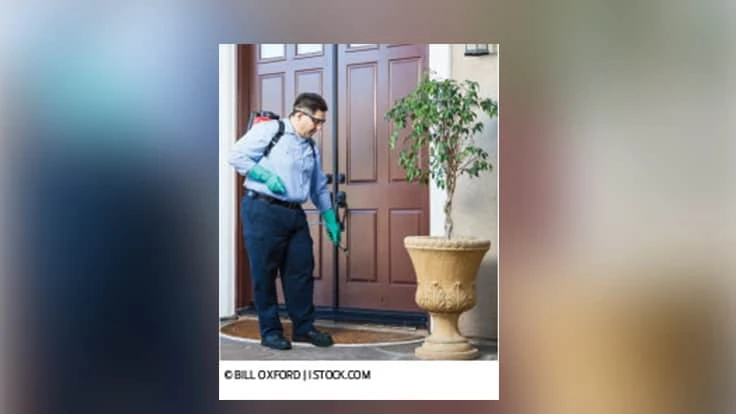
In the age of quarantine and stay-at-home orders, people, more than ever, want to ensure their homes are comfortable and pest-free. However, social distancing requirements may limit the types of services that pest professionals are able to provide their customers. When limited to exterior treatments, pest professionals often treat and prevent ant infestations with either a liquid perimeter application or the placement of various types of ant baits. According to PCT’s fourth edition Technician’s Handbook, “many companies have realized that most pest problems within the structural environment originate outdoors and that it is easier and more environmentally responsible to stop them before they enter structures, thus, avoiding the use of pesticides indoors.” So, what is the most effective exterior ant treatment method?
Kyle Youngstrom of Kansas City-based Joshua’s Pest Control said his company focuses on a combination of outdoor treatments to, ideally, prevent ants from ever getting inside. To successfully prevent ant invasions, Youngstrom said Joshua’s Pest Contol couples the use of non-repellent liquid application along the foundation of the building with granular bait. “We always do both," Youngstrom said. "We’re always going to treat with a foundation application of a non-repellent, but if you can get to the ants before they even get to the foundation with InTice, then your treatment is incredibly effective.”
That being said, it is important for pest professionals to understand which products and strategies (liquids, baits or a combination treatments) work best for the areas they service.
When making liquid perimeter treatments, pest professionals can choose from either repellent or non-repellent insecticides. Scott Robbins, A.C.E., technical services manager at Action Pest Control in Evansville, Ind., makes this decision based on whether the treatment is preventive or curative. For a preventive treatment, Robbins said he uses a liquid repellent paired with a residual granular along the foundation and near any entry points. One reason he uses a repellent for preventive services is because they are broader spectrum, he said.
However, in the case of a curative treatment, in which ants are already present, Robbins uses a liquid non-repellent and a mix of granular, gel and liquid baits. Non-repellents help make technicians better, especially when they can’t find the nest, Robbins said. With difficult-to-solve ant problems, technicians can rely on ants coming into contact with non-repellents or taking baits back to the nest and introducing the bait to the colony.
Despite choosing specific products based on circumstance, Robbins emphasized that applying products in the correct location is the most important aspect of exterior ant control.
“I think, regardless of what the product is, if you’re putting it in the right spot, whether repellent or non-repellent, that is more important than what flavor of product or what class of chemistry you actually have in your tanks,” Robbins said.
Tracy Rice, CEO of Alabama-based Rice Pest Control, said non-repellents are his go-to for successful ant management. However, he also said weather conditions and resistance are crucial in deciding which product to use. Rice emphasized the importance of rotating different products to provide the most effective service, since, for example, excessive rain might shorten the longevity of a liquid or wash away a bait. In addition to non-repellent liquids, Rice has found great success using granular bait, which he often rotates with his non-repellent applications.
Both liquid perimeter treatments and baits can be effective for preventing and treating ant infestations; many pest professionals have found them to be even more effective when paired together. It is important for pest professionals to recognize which products are most effective in the climate in which they live and the kind of preventive or curative treatment they are providing.
Latest from Pest Control Technology
- Texas PestVets Coat Drive Collects Over 850 Items for Soldiers’ Angels
- Conquer Ants Fast!
- Residential Customers More Aware of Green Products/Services, Poll Finds
- Father and Son Duo of Strib Pest Control Building Family Business in Growing Market
- Report Shows U.S. States, Counties Experiencing Highest Rodent Issues
- Tubbs Honored with GPCA Hall of Fame Award
- Mosquito Shield Named No. 1 Pest Control Franchise by Entrepreneur’s Franchise 500
- Moving Day for Oriental Cockroaches





